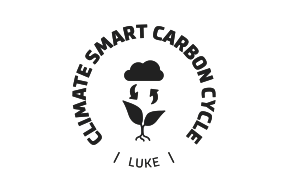Moss-covered forest ditches combat climate change
According to a study by the Natural Resources Institute Finland (Luke), the University of Tampere and the University of Helsinki, ditches in forestry-drained peatlands release less methane into the atmosphere than what has previously been estimated. The study showed that methane emissions are particularly low in moss-covered ditches. The proportion of such ditches from all forest ditches is increasing, as ditch network maintenance will decrease when the granted forestry subsidies end.

Some 5.9 million hectares of Finnish peatlands have been drained for forestry, accounting for roughly 17 per cent of Finland’s area. While drainage has caused carbon dioxide and nitrous oxide emissions, it has also significantly reduced methane emissions from the peat soil. In place of soil, ditches have, however, become significant sources of methane emissions, which is accounted in the national greenhouse gas inventory as part of the land use sector.
From Tier 1 emission factors to more advanced emission estimates
The current estimate of methane emissions of ditches from Finland’s forestry-drained peatlands presented in the greenhouse gas inventory is based on the Tier 1 emission factor of the Intergovernmental Panel on Climate Change (IPCC). However, the studies used as the basis for Tier 1 emission factors represent Finnish conditions poorly, as only two of the 11 study areas are located in Finland. This is why the dataset had to be expanded significantly.
“We conducted chamber measurements for methane emissions and collected previous measurement data regarding different types of ditches from a total of 21 study areas in Finland,” says Antti Rissanen, Academy Research Fellow at the University of Tampere.
Furthermore, the Tier 1 emission factor does not address that different types of ditches may have different levels of methane emissions.
“Based on previous studies, we could make the assumption that methane emissions from ditches depend on the type of ditch and especially on the type of vegetation in the ditch,” says Rissanen.
Low emissions from moss-covered ditches
The study showed that moss-covered ditches generate very low methane emissions, being only one eighth of emissions from moss-free water-covered ditches and Tier 1 emissions. Therefore, the Tier 1 emission factor significantly overestimates methane emissions from moss-covered ditches. These results can probably be explained by microbial activity.
“Methanotrophs, methane-consuming bacteria, live in and on mosses, which consume methane before it is released into the atmosphere. It is also possible that the organic compounds excreted by mosses restrain the activity of methanogenic microbes that generate methane,” says Rissanen.
Methane emissions from Finland’s forest ditches are lower than previously estimated
The study also estimated the area of ditches of forestry-drained peatlands in Finland. In addition, the percentage of both moss-covered and moss-free ditches was estimated.
“We estimated that two thirds of all ditches are moss-covered and only one third are moss-free. The high percentage of moss-covered ditches can probably be explained by the significant decrease in ditch network maintenance in recent years,” says Leena Stenberg, Research Scientist at Luke.
As a result of the low emissions and high percentage of moss-covered ditches, the study’s results of methane emissions from ditches of forestry-drained peatlands were roughly 8,600 tonnes of methane per year, being as much as 63 per cent lower than in the current greenhouse gas inventory (approximately 23,200 tonnes). Converted into the commonly used unit, carbon dioxide equivalents (CO2-eq), the new emission value is roughly 0.4 million tonnes of CO2-eq lower than the previous one.
The research group proposes that the national emission factors based on the results be used in the greenhouse gas inventory, as they represent emissions from Finland’s forest ditches better than the Tier 1 emission factors.
The study is part of the “Catch the Carbon” programme funded by the Ministry of Agriculture and Forestry, and it was conducted under the “Advances in soil information” (MaaTi) project.
Rissanen, A. J., Ojanen, P., Stenberg, L., Larmola, T., Anttila, J., Tuominen, S., Minkkinen, K., Koskinen, M., & Mäkipää, R. (2023). Vegetation impacts ditch methane emissions from boreal forestry-drained peatlands—Moss-free ditches have an order-of-magnitude higher emissions than moss-covered ditches. Frontiers in Environmental Science 11: 1121969.



